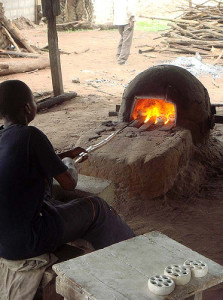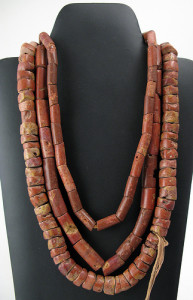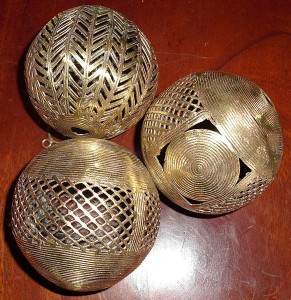Have you ever wondered where your African Recycled Glass Beads come from? I get so many emails asking where Recycled Glass Beads originate, that I thought it was high time we dedicated a blog post to the subject. Well, more specifically, the tiny factory in Ghana, now supplying some of the biggest online retailers around the globe!
Located off a dirt track on the Sombaya Road, just two hours from Africa, Cedi’s isn’t exactly a well known landmark for tourists. A collective of small, quaint clay buildings with thatched roofs and billowing chimneys, the Cedi plant employs just twelve people across the three acre site. This tiny production plant was the brainchild of Nomoda Ebenizer Djaba, (known locally as Cedi) a bead-maker who learnt his craft from his grandfather in Odumase, Krobo. Keen to expand the family business, he developed the workshop almost a decade ago, and now supplies some of the leading online bead retailers in the US.
Workers at the site each have very specific roles. There are those who are charged with the tasking of grinding down recycled glass into a powder; others who prepare the elaborate clay molds, and bead-smiths, who are responsible for preparing and firing the beads in the termite kiln.
Despite its years in operation, bead production at the factory remains a largely manual process. The glass is crushed down in vast metal buckets with a heavy pole, and the kilns used for firing built by hand from termite clay. Sand-cast beads are washed in a mixture of water and sand to give them that beautiful eroded finish, and even the Fancy Powderglass Beads are painted by hand!


